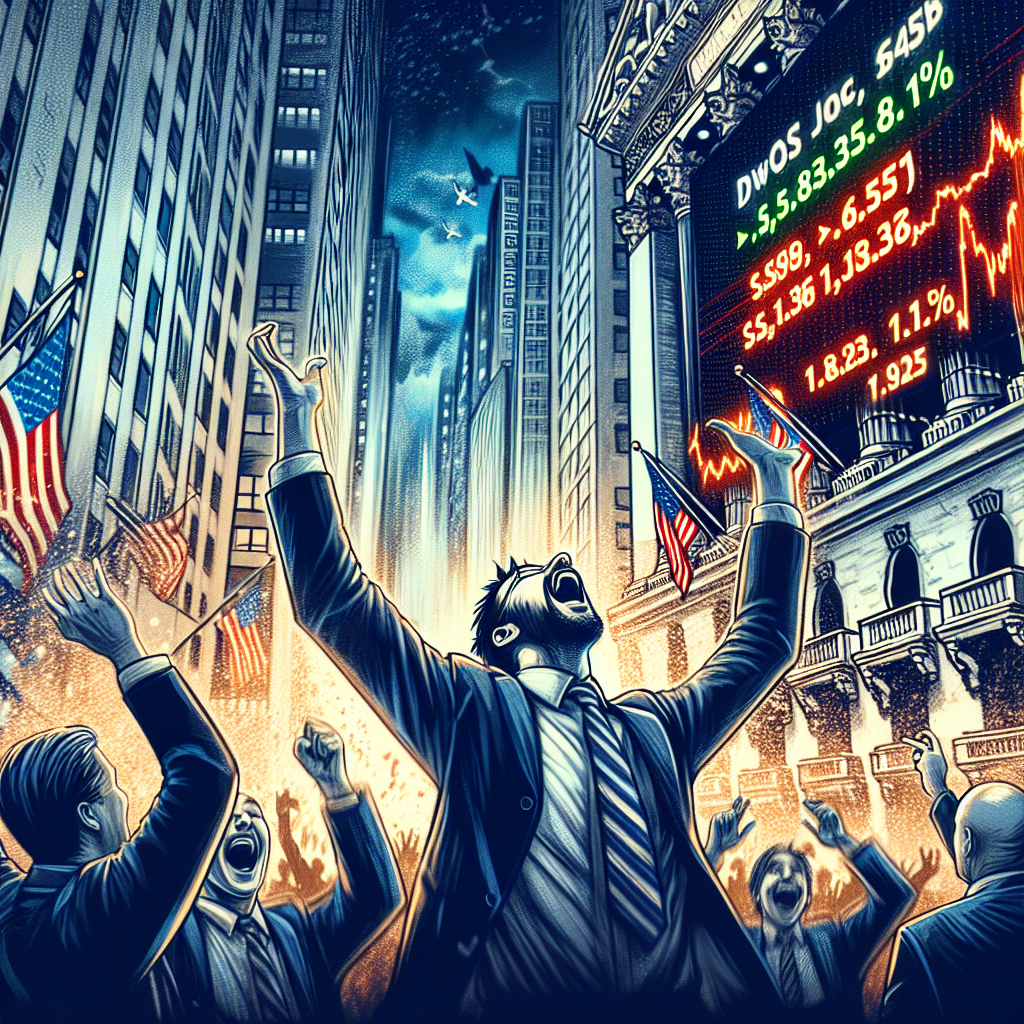On Friday, the three major stock indices on Wall Street rose, with the Dow Jones Industrial Average gaining 600 points, ending what has been the most turbulent week in history.
At the close of trading on Friday, the S&P 500 index rose by 1.81% to settle at 5,363.36 points; the Dow Jones Industrial Average increased by 619.05 points, up 1.56%, closing at 40,212.71 points; the Nasdaq Composite Index rose by 2.06% to close at 16,724.46 points.
The White House stated on Friday that President Trump is “optimistic” that Beijing will seek a deal with the United States; other countries have also begun devising plans for agreements with the U.S. The White House confirmed receiving 15 trade agreements. Meanwhile, the European Union announced that trade representatives will fly to Washington on Sunday to “seek to sign an agreement.”
As a result, the stock market surged in the afternoon on Friday.
Boston Federal Reserve Chair Susan Collins remarked that the recent market volatility did not seem to affect investors’ trading abilities.
This week witnessed the biggest market volatility in Wall Street’s history. On Wednesday, following Trump’s announcement of a temporary pause on retaliatory tariffs against non-reciprocating American countries, the three major indices surged. The S&P 500 index rose by 9.52%, marking the third-largest single-day gain since World War II, while the Dow Jones Index soared by over 2900 points.
On Thursday, due to uncertainty surrounding trade policies dampening market sentiment, traders entered a risk-averse mode, leading to major index declines. The S&P 500 index fell by 3.46%; the Dow Jones Index dropped by 1014.79 points, down 2.5%; and the tech-heavy Nasdaq index closed with a 4.31% decline.
Currently, all countries except China face a 10% tariff. On Thursday, the White House confirmed to Da Ji Yuan that goods from China will be subjected to a 145% tariff. On Friday, the Chinese government announced an increase in tariff rates on American products from 84% to 125%.
Darell Cronk, President of Research at Wells Fargo Investment Institute, stated in a report on Friday, “We are still in the early stages of global trade system transformation. Although the 90-day pause on reciprocal tariffs temporarily halted the market sell-off, it has also extended uncertainty.”
Despite the market turbulence this week, the three major indices showed a robust uptrend. The S&P 500 index rose by 5.7%; the Nasdaq index increased by 7.3% this week; and the Dow Jones index gained nearly 5%.
However, since the White House announced the imposition of reciprocal tariffs on goods from other countries on April 2, major indices have continued to significantly decline. Since then, the S&P 500 index has fallen by over 7%.
The latest consumer confidence index for April fell short of expectations. According to a consumer survey by the University of Michigan, expectations for inflation levels have soared to the highest level since 1981.
Gold prices surged to historic highs, reflecting concerns about geopolitical conflicts and financial market prospects.
The U.S. dollar fell for the fifth consecutive day on Friday, poised to mark its worst performance since 2022, while the euro rose significantly.
The yield on the 10-year U.S. Treasury bond rose again to 4.492%, closing up 0.5 percentage points on Friday, marking the largest single-week increase since 2001.
The Nikkei 225 index in Japan closed down by 3% this week, while the Stoxx Europe 600 index slightly declined.
The Chicago Board Options Exchange Volatility Index (VIX) soared to above 50 earlier this week and currently hovers around 44.

